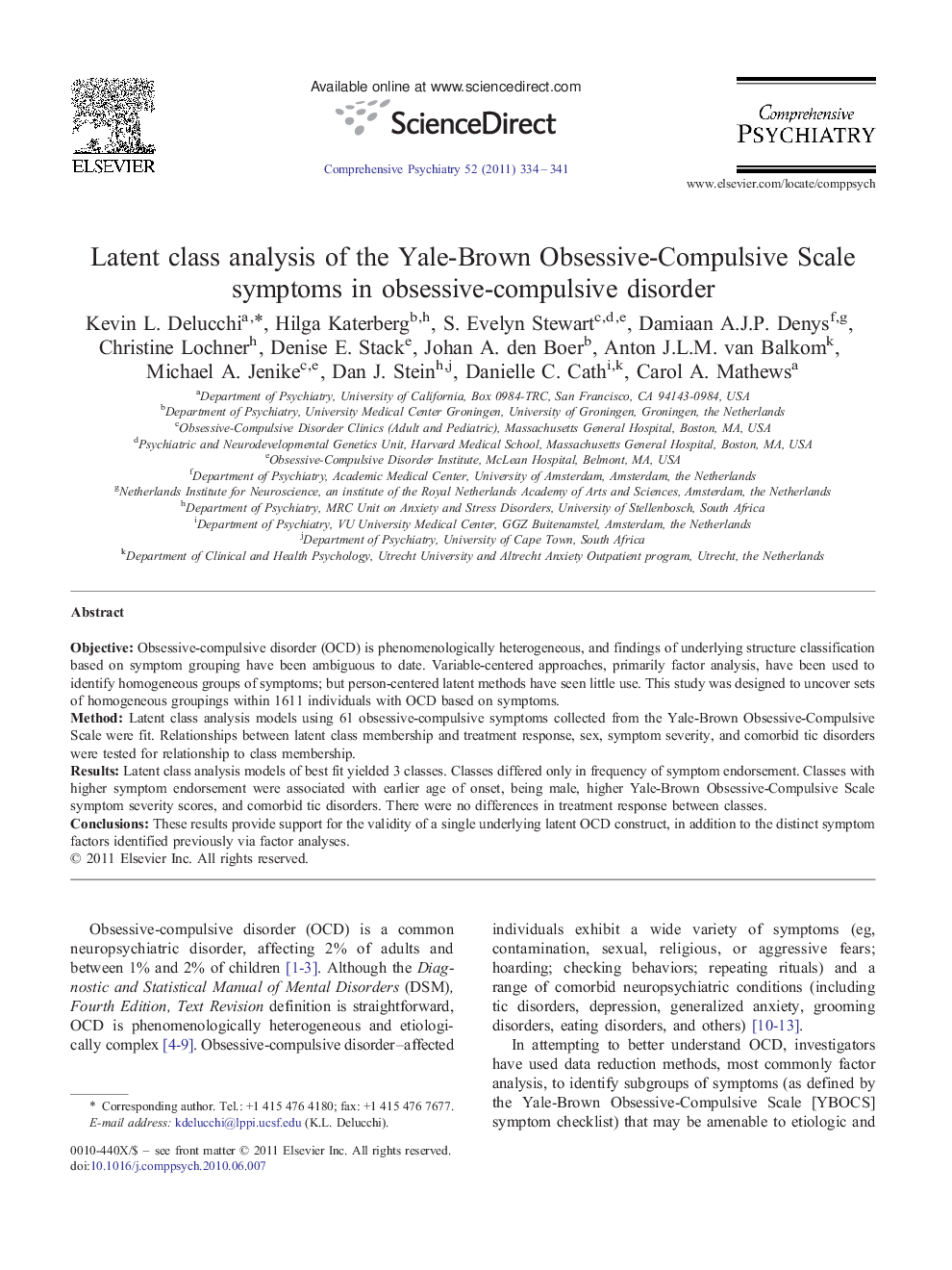| Article ID | Journal | Published Year | Pages | File Type |
|---|---|---|---|---|
| 317764 | Comprehensive Psychiatry | 2011 | 8 Pages |
ObjectiveObsessive-compulsive disorder (OCD) is phenomenologically heterogeneous, and findings of underlying structure classification based on symptom grouping have been ambiguous to date. Variable-centered approaches, primarily factor analysis, have been used to identify homogeneous groups of symptoms; but person-centered latent methods have seen little use. This study was designed to uncover sets of homogeneous groupings within 1611 individuals with OCD based on symptoms.MethodLatent class analysis models using 61 obsessive-compulsive symptoms collected from the Yale-Brown Obsessive-Compulsive Scale were fit. Relationships between latent class membership and treatment response, sex, symptom severity, and comorbid tic disorders were tested for relationship to class membership.ResultsLatent class analysis models of best fit yielded 3 classes. Classes differed only in frequency of symptom endorsement. Classes with higher symptom endorsement were associated with earlier age of onset, being male, higher Yale-Brown Obsessive-Compulsive Scale symptom severity scores, and comorbid tic disorders. There were no differences in treatment response between classes.ConclusionsThese results provide support for the validity of a single underlying latent OCD construct, in addition to the distinct symptom factors identified previously via factor analyses.
